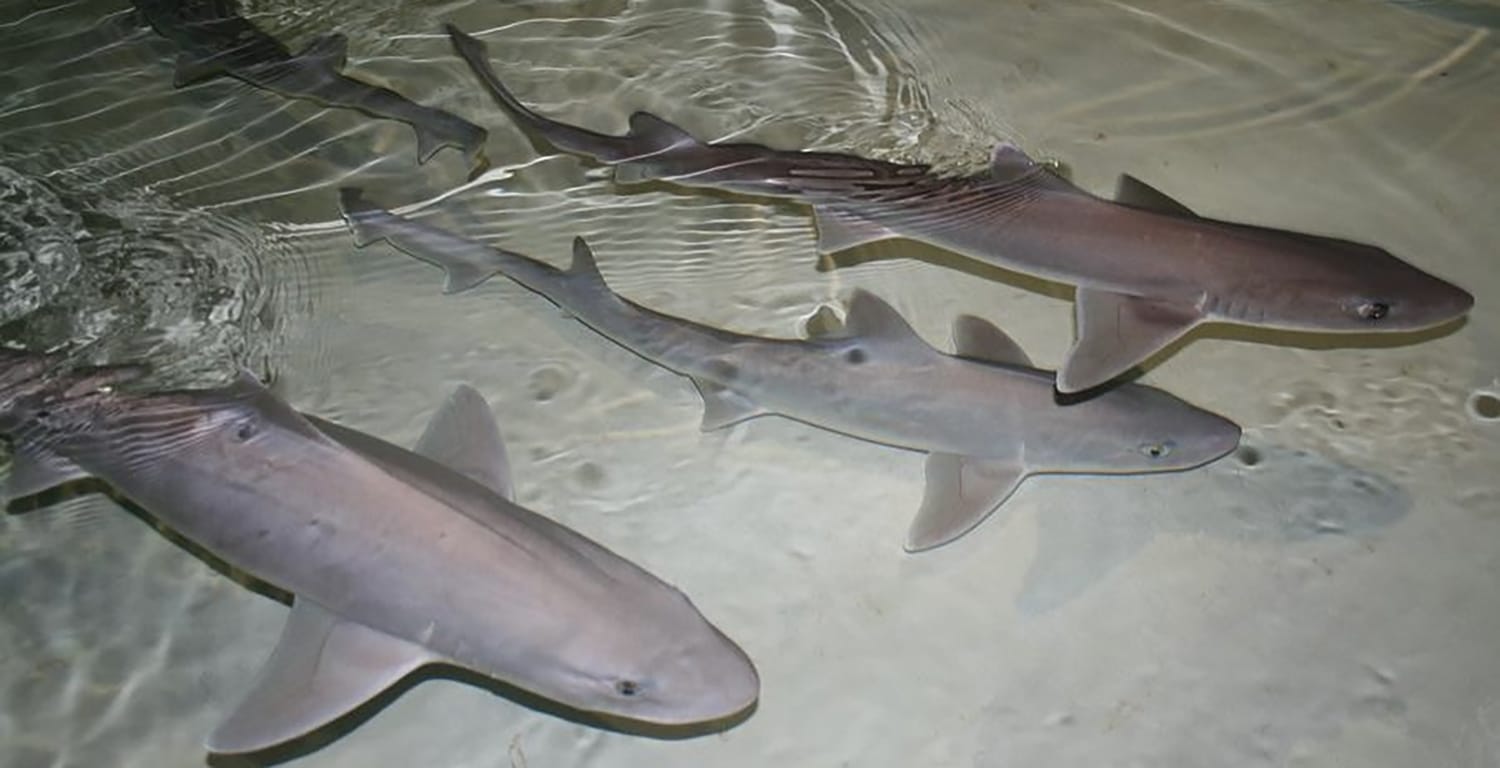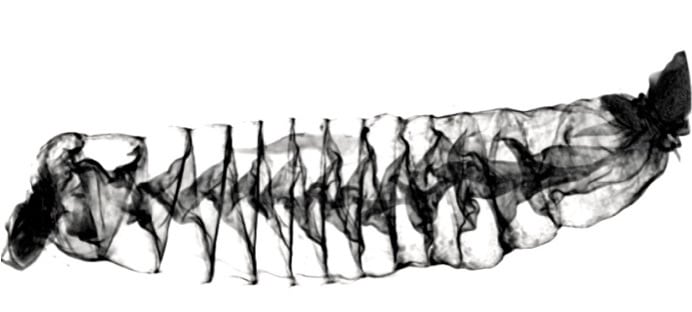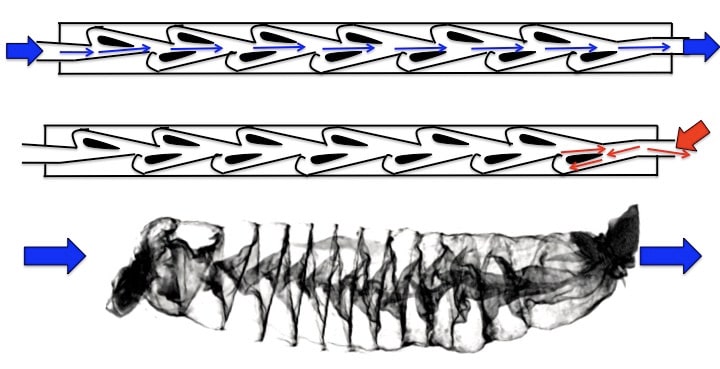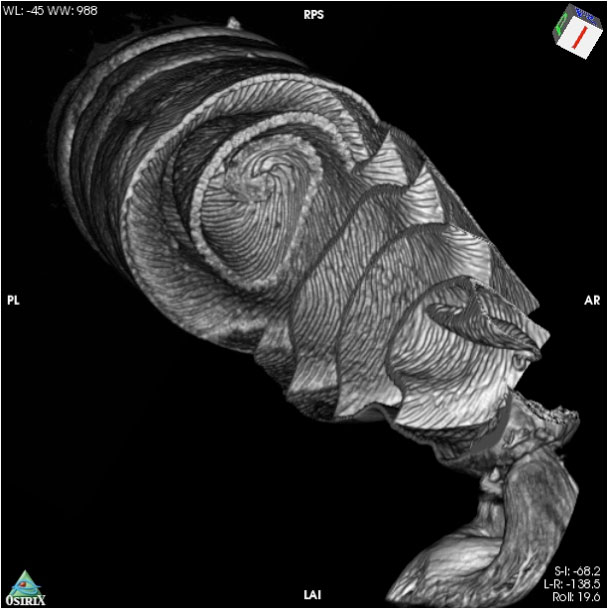
For centuries, scientists rely on flat sketches of sharks’ digestive systems to fully understand how shark intestines function. But, scientists now have produced 3D images of shark intestines from almost three dozen shark species. They aimed to understand how sharks eat and digest their food.
The study includes scientists from California State University, Dominguez Hills, the University of Washington, and the University of California, Irvine.
For the study, scientists used a CT scanner to create 3D images of Shark intestines, which came from specimens preserved at the Natural History Museum of Los Angeles. The images show the complexities of sharks’ spiral-shaped intestines.

The scans revealed some new aspects of the functions of shark intestines. Scientists found that the spiral-shaped organs slow down food movement and send it down through the gut. This process mainly depends on gravity and peristalsis, the rhythmic contraction of the gut’s smooth muscle.
The amazing fact is- this function of shark spiral-shaped intestines exactly resembles Nikola Tesla’s valve. Tesla valve, which was designed more than a century ago, allows fluid to flow in one direction, without backflow or assistance from any moving parts.

Lead author Samantha Leigh, assistant professor at California State University, Dominguez Hills, said, “This finding could shed new light on how sharks eat and process their food. Most sharks usually go days or even weeks between eating large meals, so they rely on holding food in their system and absorbing as many nutrients as possible. The slowed movement of food through their gut caused by the spiral intestine probably allows sharks to retain their food longer, and they also use less energy processing that food.”
Co-author Adam Summers, a professor based at UW Friday Harbor Labs who has led a worldwide effort to scan the skeletons of fishes and other vertebrate animals, said, “The vast majority of shark species, and the majority of their physiology, are completely unknown. Every single natural history observation, internal visualization, and anatomical investigation shows us things we could not have guessed at. We need to look harder at sharks and, in particular, we need to look harder at parts other than the jaws and the species that don’t interact with people.”

In further studies, scientists are planning to use 3D printers to create models of different shark intestines. Through this, they will get detailed insights into how materials move through the structures in real-time.
Other co-authors on the paper are Donovan German of the University of California, Irvine, and Sarah Hoffmann of Applied Biological Services.
Journal Reference:
- Samantha Leigh et al. Shark Spiral Intestines May Operate as Tesla Valves, Proceedings of the Royal Society B. DOI: 10.1098/rspb.2021.1359
Continue reading Shark intestines function like Nikola Tesla’s valve on Tech Explorist.

0 comments:
Post a Comment